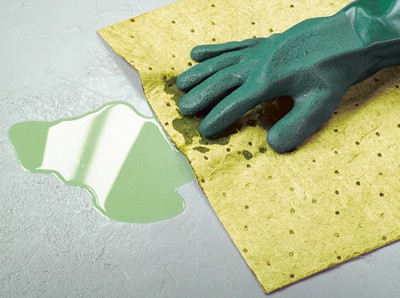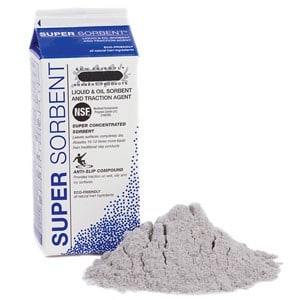Water-absorbent materials are essential in various industries, from agriculture to consumer goods.
They are used for everything from soil moisture retention to spill management.
Understanding the efficacy of different water-absorbent materials is crucial for selecting the right product for a specific application.
In this article, we will compare several common water-absorbent materials to help you determine which is most suited to your needs.
Natural Fibers
Natural fibers such as cotton, wool, and jute have intrinsic water-absorbing properties, making them highly valuable in various absorbent applications.
Cotton, for instance, can absorb up to 25 times its weight in water due to its cellulose structure, which allows it to hold a significant amount of liquid. This characteristic makes cotton an excellent choice for items like towels, cloth diapers, and absorbent pads, providing comfort and functionality.
Wool, on the other hand, has natural wicking properties that draw moisture away from the skin, making it ideal for clothing that needs to keep the wearer dry. Additionally, wool can absorb roughly 33% of its weight in water without feeling wet, thanks to its complex protein structure.
Jute, a lesser-known but equally important fiber, is also highly absorbent and biodegradable, making it a sustainable option for products such as burlap sacks and eco-friendly packaging materials.
Together, these natural fibers offer a range of benefits that synthetic materials often cannot match.
Soil Amendments
In agriculture, peat moss and coir (coconut husk fibers) are popular for their remarkable water retention capabilities, helping to prevent water runoff and maintain soil moisture levels. These organic substances not only enhance soil structure by improving aeration and drainage but are also biodegradable, making them environmentally friendly options.
Peat moss, for instance, is harvested from peat bogs and is known for its acidic properties, which can benefit acid-loving plants.
Coir, on the other hand, is a byproduct of the coconut industry, making it a sustainable alternative to peat moss.
However, the rate and capacity of moisture absorption can vary greatly depending on the quality, processing, and preparation of these materials. Additionally, coir has a neutral pH, which makes it suitable for a wider range of plants compared to peat moss.
Despite their benefits, it’s crucial to consider the environmental impact of harvesting these materials, particularly peat moss, which is a non-renewable resource that takes thousands of years to form.

Synthetic Polymers
Synthetics like polyacrylamide and sodium polyacrylate are fascinating superabsorbent polymers that can retain a substantial amount of water relative to their mass.
For instance, sodium polyacrylate, commonly found in disposable diapers, can absorb hundreds of times its weight in water, making it an essential component in products designed to manage moisture. These materials work by forming a gel-like substance when they come into contact with water, effectively locking in the liquid and preventing leakage.
In addition to their use in consumer products, these superabsorbent polymers are often employed in industrial settings for spill containment and control due to their high efficacy in moisture absorption. Their application extends to agricultural practices as well, where they are used to improve soil moisture retention and promote plant growth.
Furthermore, in medical fields, they are utilized in wound dressings to manage exudate, keeping the wound environment optimal for healing. The versatility and efficiency of these polymers underscore their importance in a wide range of industries.
Hydrogels in Agriculture
In agriculture, hydrogel crystals are sometimes mixed with soil to increase water retention, especially in arid regions where water scarcity is a significant challenge. These synthetic polymers have the remarkable ability to absorb and hold a large volume of water, releasing it slowly as plants need it.
By doing so, they create a more consistent moisture level in the soil, which is crucial for the healthy growth of crops. This technology can significantly reduce the frequency of irrigation required, leading to substantial water savings and more sustainable farming practices.
Additionally, the use of hydrogel crystals can improve the overall structure and aeration of the soil, further promoting plant health.

Mineral-Based Absorbents
Minerals such as vermiculite and perlite are used for their ability to trap water within their structure, making them valuable in various applications. Vermiculite can absorb 3 to 4 times its volume in water, which makes it particularly useful for packaging materials that require moisture resistance. This property is also beneficial for horticulture, where vermiculite helps in retaining moisture and nutrients in the soil, promoting healthy plant growth.
Perlite, on the other hand, is primarily used for its excellent aeration properties. It helps improve soil drainage and prevents compaction, making it ideal for potting mixes. Additionally, perlite has moderate water-retaining properties, which, although less than vermiculite, still contribute to maintaining the right moisture level for plants.
Combining these two minerals can significantly enhance the physical properties of soil and other growing mediums, facilitating better plant health and growth.
Zeolites
Zeolites are microporous, aluminosilicate minerals with exceptional ion-exchange and moisture absorption abilities. These versatile minerals are composed of a three-dimensional framework of silica and alumina tetrahedra, which create a network of interconnected pores.
Due to their unique structure, zeolites can selectively absorb various molecules based on size and polarity, making them invaluable in numerous applications. They are commonly used in industrial dehumidification processes and water purification systems, where their selective absorption properties effectively remove unwanted ions and contaminants.
Additionally, zeolites find applications in catalysis, gas separation, and even agriculture, showcasing their broad utility and significance in modern technology.
Comparison and Applications
Each of these materials has its strengths and ideal applications. Natural fibers are best for consumer goods where comfort and reusability are important.
Synthetic polymers, with their exceptional absorption rates, are more suited for situations where large volumes of water need to be absorbed quickly.
Mineral-based absorbents offer a balance between water retention and aeration, making them ideal for horticulture and packaging.
When selecting a water-absorbent material, consider the required absorption rate, environmental impact, cost, and the specific use case.
By understanding the properties of each material, you can make an informed decision that meets your water retention and moisture absorption needs effectively.
In conclusion
The efficacy of water absorbent materials varies widely based on their composition and intended use.
Whether you’re looking to manage spills efficiently or improve soil moisture retention, there is a material that fits the bill.
As water conservation becomes increasingly important, the role of these absorbent materials will undoubtedly grow across all sectors.
Discover Premium Spill Solutions at AbsorbentsOnline.Com
For top-quality solutions to all your spill cleanup needs, look no further than AbsorbentsOnline.Com.
Our extensive selection of water-absorbent materials, ranging from natural fibers to high-performance synthetic polymers and mineral-based absorbents, is designed to meet various requirements efficiently and effectively.
Whether you need products for industrial dehumidification, soil enhancement, or simple household spills, we have the right solution for you.
Shop AbsorbentsOnline.Com today to explore our comprehensive range and take the first step towards superior moisture management.
Don’t wait — ensure your spills are handled quickly and efficiently with our premium absorbent materials.